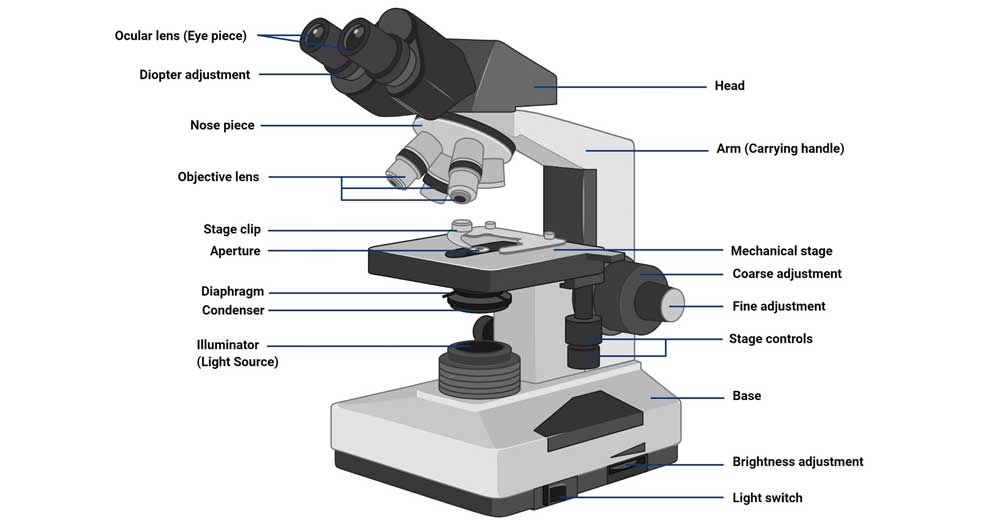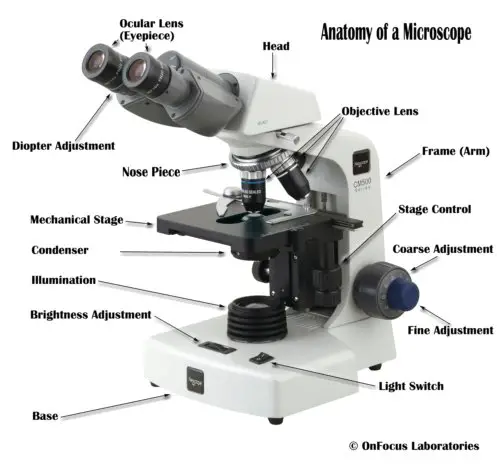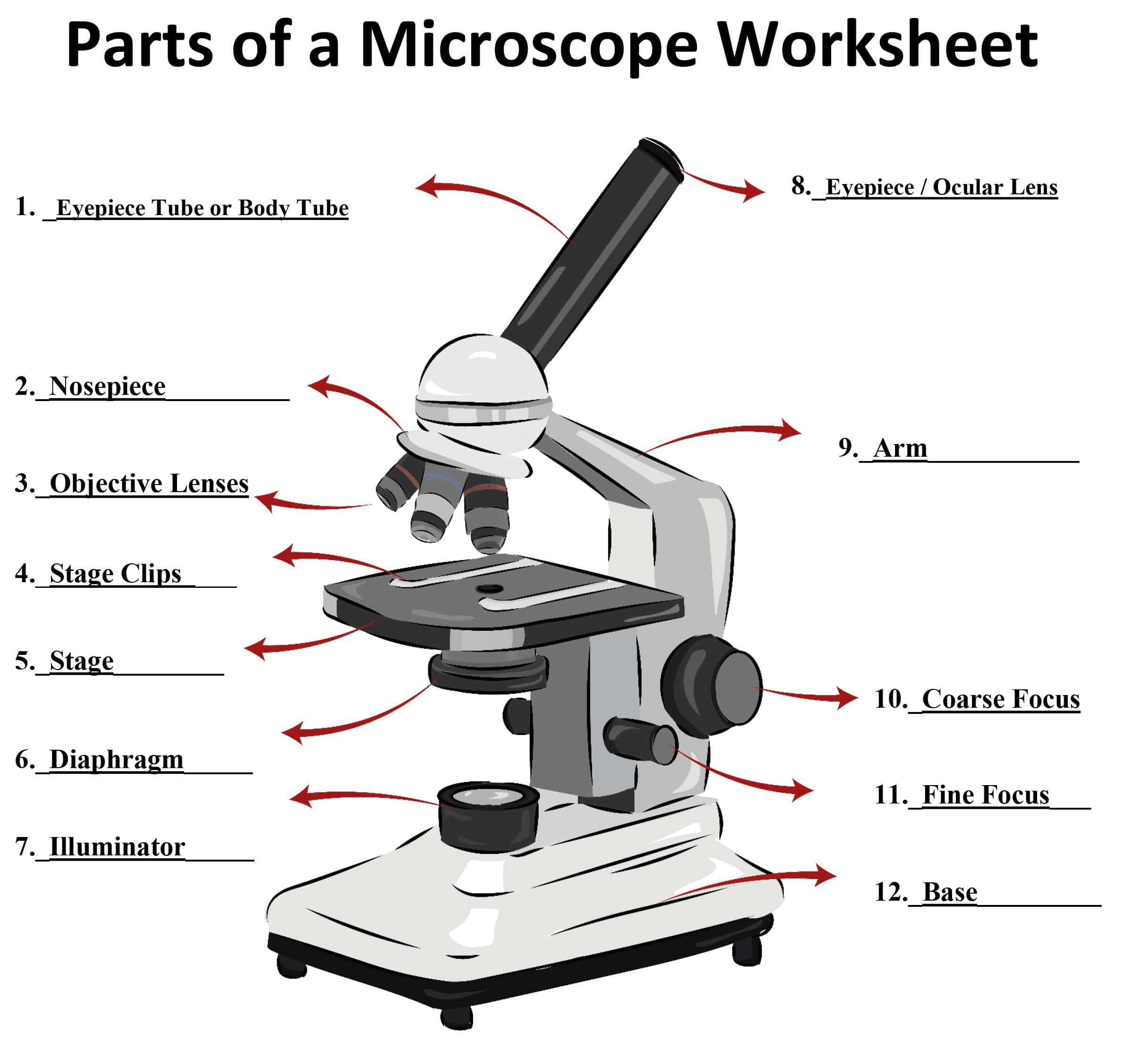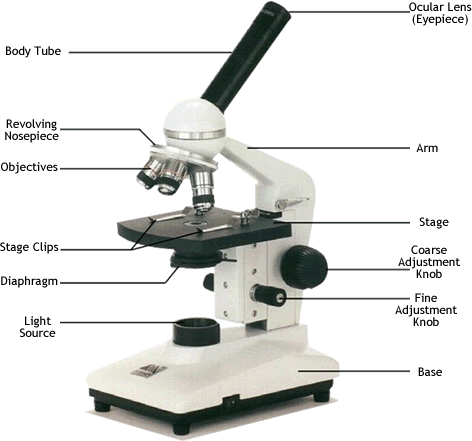What Moves the Stage Left and Right on a Microscope
In the center of the stage is a hole through which light passes to illuminate the specimen Figure 44. Some stages have locater marks on them to allow the user to note the position of something interesting.

The Parts Of A Compound Microscope And How To Handle Them Correctly Human Anatomy And Physiology Lab Bsb 141
When using a mechanical stage one of two knobs are rotated to move the slide in very small increments either left to right or forward and back.

. The stage has arms to hold slides rectangular glass plates on which the specimen is mounted. The specimen in microscopy is where. But it also moves on the X-Y axis to allow you to scan your specimen.
This is the part of the microscope that holds two or more objective lenses and can be rotated to easily change power magnification. The stage of a microscope is the aluminum or iron platform where the specimen usually on a glass slide is raised or lowered for observation under the microscope. This can significantly improve user experience because you can make fine movements of.
The microscope mechanical stage below can be put on the microscope above by removing the stage clips and screwing the mechanical stage onto the flat microscope stage. Adjustment knobs on the left side of the microscope move the stage up and down with separate adjustment for coarse and fine focusing Figure 43. If your microscope has a mechanical stage you will be able to move the slide around by turning two knobs.
This control as seen on the Mirand Microscope on this site used a top stage plate fixed to the left side of the stage by a screw in a slot and moved on the right side by a lever. One that moves the mechanical stage left to right and one that moves it front to back light intensity control. This device does not allow one to move easily in any direction but rather front and backward movement can only be easily accomplished in an arc.
One moves it left and right the other moves it forward and back. First it moves up and down on the vertical axis to obtain focus. A microscope mechanical stage gives the user much more control when viewing the sample and makes it easier to keep that sample inside the microscope field of view.
The mechanical stage on a microscope moves in three dimensions. Mechanical stage the silver or black apparatus that actually holds the slide and moves it to position it on the stage stage adjustment knobs move the mechanical stage. Regulates amount of light shinning up through the slide low power objective usually magnifies 10X excluding ocular magnification mechanical stage knobs two knobs that allow for movement of the mechical stage.
These stages are made to work smoothly and withstand the trials of use. One knob moves the stage left and right while the other moves it forward and backward nosepiece. The X-axis control moves the specimen right and left.
The Y-axis control moves the specimen slide back and forth. This is the basic requirement for a microscope stage. Revolving Nosepiece or Turret.
Consists of two knobs. Microscope stages will often include stage clips that will hold the slide in place while the stage is being adjusted up and down or side to side. Most are made from iron or aluminum.
A microscope mechanical stage allows the user to maneuver the samples under the microscope left and right or forward and backward simply by turning a small knob.

Microscope Parts And Functions

Parts Of A Microscope With Functions And Labeled Diagram


No comments for "What Moves the Stage Left and Right on a Microscope"
Post a Comment